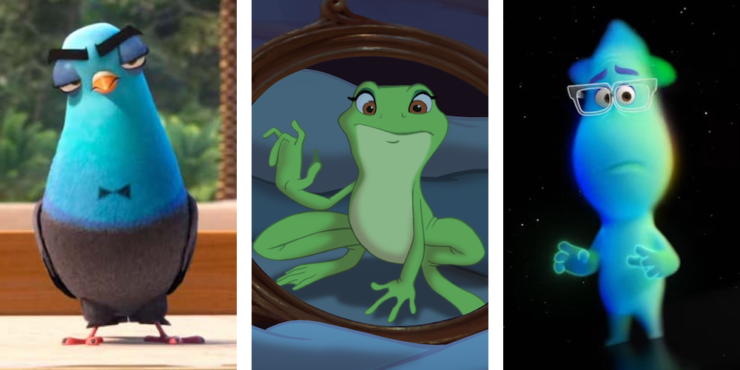When I first saw the trailer for Pixar’s Soul in theaters, I leaned forward in my seat, ready to give it a standing ovation. My 20-something Black and Puerto Rican self was thrilled that one of the top animation studios in the world was committing to a movie where an African-American man would be the lead character. But when the protagonist was transformed into a fuzzy blue…soul creature during the trailer, my excitement changed to disappointment. As I awkwardly slumped back into my seat, I realized that Soul had already taken something away from its audience.
To understand what Soul has taken, we need to look back at the American animated movies I’ve been given over the last three decades. When I was growing up in the ’90s, there were a few major films that championed diversity onscreen: Aladdin, Pocahontas, and Mulan all featured characters of color in their lead roles. Their stories were creative, inspiring, and funny. Although they weren’t overly concerned with accurate representation and storytelling (let’s just say Pocahontas takes a generous detour from the history books), these diverse stories showed me how life might be for people that didn’t look like me. They gave me a little more insight into cultures I hadn’t seen depicted in the media before. Through their stories, I understood more about the world I lived in.
But even as I was singing “I’ll Make a Man Out of You” for the thousandth time, I couldn’t help but wonder when it would be my turn. While Black characters like Frozone from The Incredibles were (wait for it) cool, they were frequently cast as side characters in someone else’s story. When would I get to see someone like me take the lead in an animated role?
Disney promised to answer my question in 2009. The House of Mouse announced that an African-American woman named Tiana would star in a princess film. After waiting for nearly 20 years, I was finally going to see a Black person take the lead in a major studio cartoon on the big screen…
And then they turned her into a frog.

Any hopes I had that the transformation would be a short gag were dashed when I saw the film. A slimy kiss turns Tiana into a frog around 30 minutes into the movie. She hops around for almost an hour before she fully turns back into a human again. When you can consider that the movie runs at 138 minutes, including credits, and that it cuts away to several side plots, this means audiences spend less than half an hour with Tiana appearing as a Black woman.
When she delivers her signature number, “Almost There,” it felt like a cruel joke—in Tiana’s ballad, she sings about the patience and endurance she’s needed to inch ever closer to her dreams. After waiting for almost twenty years, my wish to finally see a Black lead dominate the screen had almost come true. But the character’s transformation blocked my view for far too much of the movie, delivering more of a tease than a triumph. I left the movie disappointed but hopeful. Although this movie was a letdown, surely Hollywood wouldn’t do something like this again, right?
In 2019, Blue Sky Studios unveiled a Will Smith vehicle called Spies in Disguise. The trailer started by promising a cartoony thriller with a Black spy as the lead. But by the time the trailer ended, Smith’s character had become…a pigeon. As an NYC native, there was truly no greater insult. Despite my hurt feelings, I trudged my way to the theater, curious to see how long it would take for his lame-duck transformation to occur.
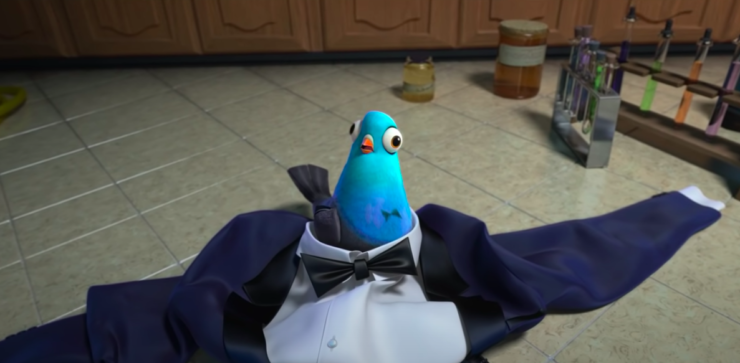
In an eerie echo of The Princess and the Frog, Smith’s character is turned into a pigeon at around the 30-minute mark. Thankfully it only takes him 43 minutes to become human again. This left audiences with a generous 45 minutes of screentime where he’s a Black man. My use of the word “generous” isn’t just sarcasm, here: If you step away from these few Black animated leads, you’ll notice this trend toward transformation trend tends to hit characters of other races too…
The young Mexican musician Miguel in Pixar’s pitch-perfect Coco starts transforming into a skeleton around 28 minutes in. He isn’t fully human again until about an hour later. Disney’s underrated The Emperor’s New Groove sees the Incan prince Kuzco converted into a llama about 22 minutes in. He stays that way for 54 minutes. But it’s Brother Bear that breaks all established records when an Inuit boy named Kenai turns into a bear at the 16-minute mark. After wandering the wild for 53 minutes, he chooses to become a bear permanently. All three characters represent populations and cultures that haven’t been given many chances to even feature in—much less star in—animated stories. It was incredibly disheartening to see their faces obscured, every time, and realize that they weren’t truly being given their time to be seen.
Buy the Book
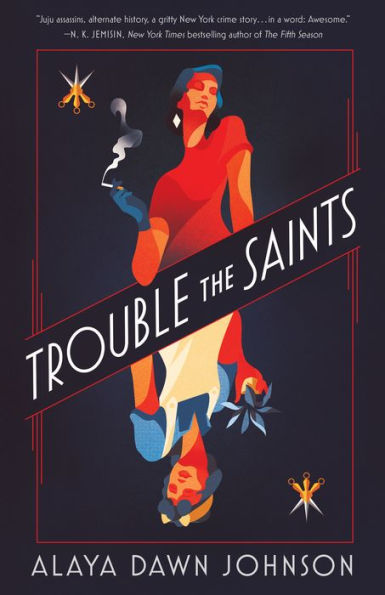

Trouble the Saints
But time isn’t the only thing that’s lost when diverse characters undergo these full-body transformations. Once the characters assume their new forms, the film no longer has to deal with the individual issues and challenges tied to their identities. The Princess and the Frog may be one of the most frustrating examples of this: Tiana is a Black woman living in 1920s New Orleans, putting all of her considerable energy, hard work, and savings toward her dream of opening her own restaurant. During the first section of the movie, audiences see her struggle against sexism and racial prejudice. Investors aren’t willing to back her solely because she’s a Black woman. But the potential to do a deeper dive into how she navigates this world is abruptly pushed aside so we can see the transformed frog-Tiana watch a jazz-loving alligator play the trumpet.
Normally, I would be all about seeing a reptile riffing through some jazzy tunes. But it’s hard to get behind this change in focus when it comes at such a high cost. Surely, some members of the film’s audience have never experienced the challenges a character like Tiana faces—have never had their ambitions stalled and their careers hampered due to systemic racism or sexism. If they’re presented with a movie that spends half of its runtime showing what that experience is like, driving home how real it is, they could gain a better understanding and appreciation of what a Black woman like Tiana is truly up against.
On the other hand, there are audience members who will take one look at Tiana’s story and instantly draw parallels to their own. Seeing Tiana overcome all the barriers that stand in the way of her opening a restaurant may inspire them. It could also give them inspiration and ideas about how to confront and break down walls holding them back in their own lives. But instead of taking the opportunity to educate and enlighten the audience about different ways to beat a stacked system while telling their story, the film’s writers chose to teach us about how much mucus frogs produce. When diverse characters lose their identities, the audience loses opportunities to absorb valuable lessons and insights.
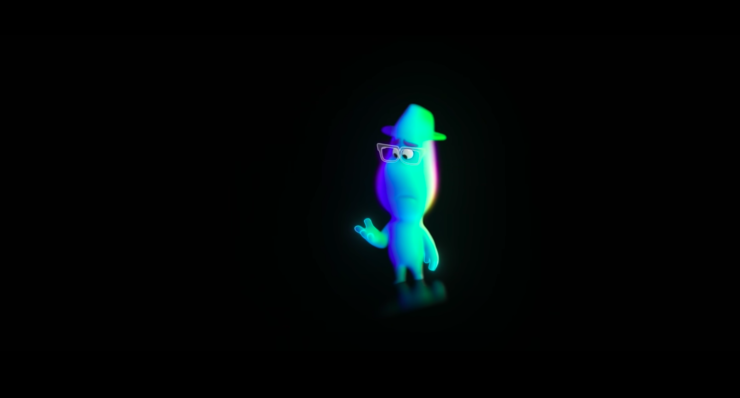
Fortunately, there’s been a few amazing animated movies in recent years that prove that filmmakers can invest in characters of color without caveats. Moana gave us a bold new Polynesian princess without ever changing a hair on her head; this in turn gave audiences plenty of time to learn about Moana’s culture and become familiar with her beliefs. In 2020, the animated short Hair Love won an Oscar by focusing on the significance of hair within a Black family, as a father learns to do his young daughter’s hair for the first time (if you haven’t seen it, you can take a few minutes to watch it here). The only physical thing that changes about the characters throughout the story are their hairstyles. But arguably, the most significant contribution toward greater diversity in the medium occurred two years ago.
In 2018, Sony’s Spider-Man: Into the Spider-Verse centers on a young man named Miles Morales. After Spider-Man dies, Miles is tasked with taking up the mantle of the famous hero. Before he learns how to leap across the city and take out villains, audiences have a chance to see what Miles’ life is like as a young Black and Puerto Rican man growing up in New York. He effortlessly switches between English and Spanish at home while stealing a spoonful of rice in the kitchen or drawing in his sketchbook. We learn that Miles feels out of place after winning a spot at a specialized boarding school outside of his neighborhood. He’s unsure if he can live up the expectations of his friends, family, and an entire city. While Miles is struggling with all of this, he gains spider-powers that enhance his physical abilities…but without changing his appearance.
Since his face and skin color remain unchanged, the writers are able to fully dive in, exploring the challenges that come with being biracial in society. They spend so much time establishing Miles and his world that when he puts on the Spider-Man mask, we still don’t lose sight of who he is underneath. Even when he’s surrounded in a room full of different Spider-people in costume, our eyes are constantly drawn back to Miles because his personality shines through the spandex.
It also helps that Miles is pretty reckless with his superhero identity. He almost compulsively takes off his mask every chance he gets. But outside of giving us more opportunities to see his face, the moments where Miles reveals his true identity are often the most impactful moments of the film.
One of the most powerful examples occurs late in the movie. When Miles is mistakenly accused of murder, he’s held at gunpoint by a police officer and forced to put his hands up. To make matters worse, the officer is his father. Although Miles’ father doesn’t see his face, the audience does.
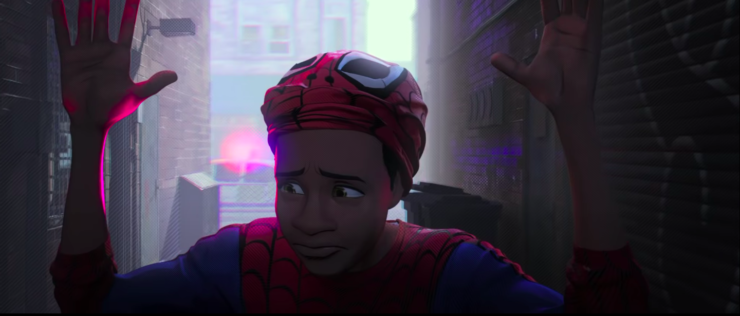
For me, the image of an unarmed biracial teenager with his arms up immediately evokes the “Hands Up, Don’t Shoot” chant. It’s a phrase that some Black Lives Matters protestors are still using in 2020 to call out police brutality. But even if audience members don’t make the same connection as I did, they can still recognize how unfair it is that Miles is held at gunpoint for something he didn’t do, and how terrified he is in that moment. Whether viewers are aware of what real-world connections the scene evokes or not, they are still exposed to an important lesson. It’s an image that simply wouldn’t have carried the same weight if we didn’t see Miles’ true face.
I could go on forever about all the subtle touches that made the story of Miles Morales such a beacon of representation when it was released…but the film’s many accolades speak for themselves. Into the Spider-verse won the Academy Award for Best Animated feature film. And it did so without turning Miles into a spider (or a verse, or anything else) in telling his story. Audiences watch him defeat supervillains and earn the respect of allies, seeing him as a biracial teenager for the movie’s entire runtime. It’s a sentence that bears repeating: Miles is himself the entire time.
I remember leaping up from my living room chair to celebrate the Academy Award win with tears in my eyes. Finally, an animated story told about someone who looked like me existed, without any caveats, or obfuscations, or excuses for hiding its biracial lead. And it had taken the film world’s highest prize.
When it comes to representing people of color in animation, we need more and more stories like Moana and Hair Love and Into the Spider-Verse. These movies are shining examples of how to represent characters of color. Moreover, they all proved that you don’t need to change the physical appearance of minority leads in order for audiences to embrace them. When you craft great animated stories about characters of color living in their worlds, people will support them. And maybe, just maybe, seeing these diverse characters in theaters will help audiences understand other realities, and other kinds of experiences, by seeing what someone who doesn’t look like them goes through every day. In the divided world of 2020, we could all use more empathy and understanding.
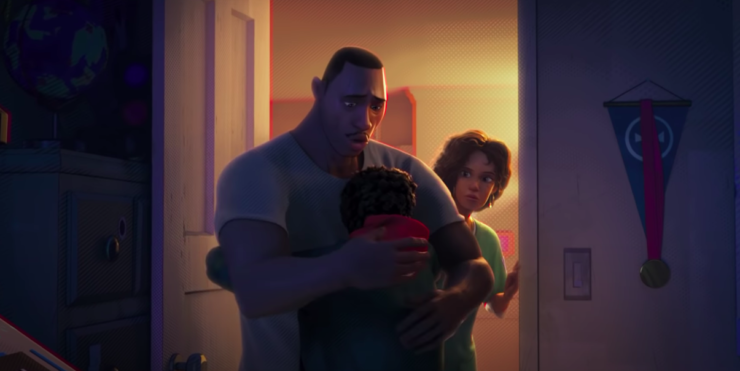
That’s why I’m not looking forward to seeing Joe turn into that generic blue blob around 30 minutes into Soul. Every second he spends transformed is a missed opportunity, as audiences get less and less time to understand what it’s like to step into the shoes of a Black man. Unfortunately, with the movie completed and slated for release in November, the fact that Joe’s face will disappear underneath a fuzzy blue layer is inevitable—but there’s still time to prevent this transformation trend from creeping into future stories.
So if you’re a writer, head of an animation company, or a rich producer that wants to fund my animated screenplays, I have one request: Let’s leave the magical physical transformations out of the final draft of your script about that character of color. Because it’s a trend that has hidden diverse faces, and held back real, meaningful progress when it comes to representation. It’s a trend that has robbed audiences of opportunities to see how minorities face the world and connect with their experiences. It’s a trend that left me waiting nearly 30 years to feel like I was fully seen in an animated story.
I don’t want to have to wait that long again.
Andrew Tejada is an NYC native so there’s a 90 percent chance this was written on the subway. When he’s not writing or consuming movies/tv, he’s pitching his Static Shock screenplay to anyone who’ll listen. More of Andrew’s projects and words can be found on Facebook at “Arete Writes Things.”










